(Material prepared by Silvia Rivero)
ENGLISH ARTICLES: AN OVERVIEW
The use of articles (“a,” “an,” and “the” or no article) is an area of special significance for multilingual writers, since it is characterized by large variation across languages. In consequence, any error in this area will be very noticeable in an text as a mark of non-native writing. Given this fact, it is important for multilingual writers to master the use and non-use of articles and to learn the meaning their use/non-use conveys in English.
THE complaint was dismissed.
A new witness changed the course of the trial.
AN accountant was called to testify.
[0] Justice was served.
This section covers the English articles THE, A, AN and their omission. We will also show you a method for deciding which article to use when you are not sure.
Two important concepts are linked to article usage: “countability” and “definiteness.” Understanding these concepts will help you decide whether to use an article or not and on which article to use.
Articles in English have two types of reference: DEFINITE (referring to a specific member of a group, e.g. THE) and INDEFINITE (referring to any member of a group, e.g. A, AN). A “definite” article is used to give specific reference to a noun and to refer to something known to both the writer/speaker and the reader/listener.
I welcomed THE visitor today.
(Definite reference: both the writer/speaker and the reader/listener know what visitor you are referring to)
I received A visitor today.
(Indefinite reference: you are not specifying what visitor you are referring to and you are the only one who knows that)
The definite article THE is used when BOTH the writer/speaker and the reader/listener know what is being referred to.
If neither of them or only one of them knows what is being referred to, then the indefinite articles A/AN should be used.
2. Definite Article: THE
English requires the use of the definite article THE before singular and plural nouns to indicate specific reference, reference to a particular member of a group.
Compare: A dog bit the plaintiff. (any dog; either you do not need to specify which dog you are referring to or you simply don’t know)
The dog bit the plaintiff. (a specific dog; both you and your reader/listener know which dog you are referring to)
In general, the article THE is used:
with noncountable nouns that are made more specific by using a modifying phrase or clause (underlined below):
- the defense presented at the trial was especially weak.
- the image he projects does not favor his case.
- the concept of diversity applies here.
and when a noun has a specific reference to something unique:
and it is not used with noncountable nouns that refer to something in a general sense:
- [0] Justice is a concept difficult to grasp sometimes. [0] = No article
The use of THE (Definite Reference) is determined by the following specific instances:
- When something is mentioned for the second time in the text:
I wrote a letter of complaint [first mention, indefinite].
Instead,
I wrote a letter of complaint. THE letter had an angry tone [second mention, definite] - With the superlative (because it signals there is only one possible referent):
THE son was THE most articulate witness in the case. - When only one entity exists:
THE Moon is a satellite. [There is only one satellite we refer to as ‘the Moon’] - When a phrase modifying the noun provides more information that specifies the reference of the noun:
THE witness (that) you brought refused to testify.
THE witness from Connecticut refused to testify
THE witness who refused to testify was arrested in a street incident yesterday.
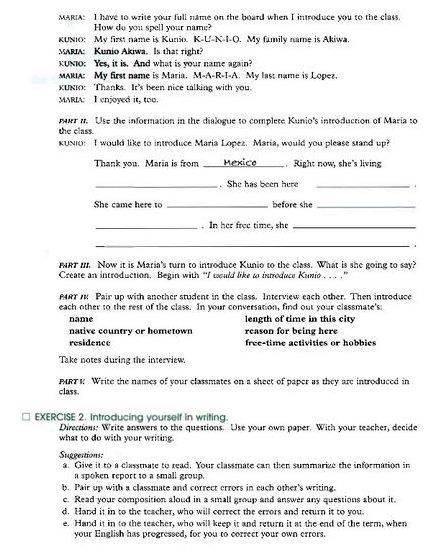
I read a book about Criminal Law for the exam. (the phrase about Criminal Law is not specific enough to limit the reference of the noun; it could be ANY book about Criminal Law)
THE book about Criminal Law that was assigned by the professor was too complicated. (the phrase that was assigned by the professor limits the reference to only ONE entity; it’s not ANY book: it’s the book assigned by the professor.
Open THE window.
I’m going to THE library.
COUNTABLE VS. UNCOUNTABLE NOUNS It is important for multilingual writers to recognize crosslinguistic differences in this area. A noun considered uncountable in one language may be considered countable in another and, consequently, pluralized, e.g. soap is an uncountable noun in English and cannot be pluralized except by preposing the phrase a bar of to it (I like to use scented soap vs. I bought two bars of soapbut. I bought two soaps is wrong). However, in Spanish the same form can be pluralized, e.g. Me gusta usar jabón (singular) desodorante vs. Compré dos jabones (plural).
Countable nouns refer to people, places, or things that can be counted (one contract/two contracts, one witness/two witnesses). A countable noun can always be made plural–usually by adding -s or -es or some other plural marker (e.g. trial[s], parti[es], child[ren] ).
Some words do not show any variation in form between the singular and plural (e.g. The sheep is in the field / The sheep are in the field ).
Uncountable nouns often refer to drinks and food, other general substances, or concepts (meat, tea, steel, information, justice ):
Examples of Uncountable Nouns in English:
- Food and Drink. bacon, beef, beer, bread, butter, cabbage, candy, cauliflower, chicken, chocolate, coffee, corn, cream, fish, fruit, juice, lettuce, meat, milk, oil, pasta, rice, salt, spinach, sugar, tea, water, whiskey, wine, yogurt.
- General Substances. air,cement, clay, coal, copper, dirt, dust, foam, gasoline, gold, ice, leather, paper, petroleum, plastic, rain, rubber, silver, soap, steel, wood, wool.
- Abstract nouns. abandonment, access, adultery, advice, alimony, anger, anguish, arson, authentication, beauty, capacity, conduct, confidence, courage, deprivation, desperation, discretion, employment, empowerment, evidence, extortion, fortune, fun, happiness, health, honesty, housing, information, insurance, intelligence, intent, knowledge, land, love, malice, negligence, poverty, privacy, real estate, sadness, satisfaction, strength, truth, wealth.
- Others. biology, clothing, darkness, equipment, furniture, gossip, homework, jewelry, luggage, machinery, mail, money, music, news, poetry, pollution, research, scenery, traffic, transportation, violence, weather, weight, work.
Some uncountable nouns (except for concepts) can be turned into countable nouns by preposing a phrase to them (two bottles of wine, a bar of soap, a piece of information, an act of violence, a burst of anger, a piece of evidence ).
e.g. The defendant’s lawyer is sure the judge will accept new evidence in this case.
vs. The defendant’s lawyer is sure the judge will accept three new pieces of evidence in this case.
Some uncountable nouns can be used in the plural, but their meaning changes:
experience / experiences: e.g. He had to rely on experience / I lived unforgettable experiences in this house.
light / lights: e.g. The apartment didn’t have much light / The bus did not stop at the (traffic) lights.
paper / papers: e.g. This office is wasting too much paper / I submitted all my papers yesterday.
HOW CAN I DISTINGUISH BETWEEN USING A DEFINITE OR AN INDEFINITE ARTICLE WITH A COMMON NOUN WHEN I AM NOT SURE WHICH ONE IS CORRECT.
If you are unsure whether to use a definite (THE) or an indefinite article (A, AN) with a common noun, you should ask yourself the following questions:
Is the Noun Singular?
The detainee provided very useful pieces of information
• Sometimes, multilingual writers use the indefinite articles A/AN with count nouns in some prepositional phrases that are idiomatic expressions such as on vacation, by plane, by car, at home, at school, in school, to bed, in bed, to college, at night, in court.
e.g. The witness testified that he had seen the defendant take the child to school[and NOT to THE school] himself.
THE USE OF ARTICLES WITH PROPER NOUNS
Proper nouns refer to specific people, places, and things (Martin Luther King, New York City, St. Patrick’s Cathedral). However, even though these nouns are inherently definite, the definite article THE is not used with most SINGULAR proper nouns.
The Susan Brown was considered a troubled woman. (Wrong)
Susan Brown was considered a troubled woman.
(This is also a source of errors, since the use of the definite article with proper nouns is allowed in other languages)
In English, you use the article THE with proper nouns:
- to emphasize the uniqueness of that entity:
e.g. It’s THE Barbra Streisand.
e.g. THE Elvis I got to know was a defeated king.
e.g. THE Johnsons will go to court today.
The United States
The United Nations
e.g. The city of New Orleans
The Republic of Korea
the City University of New York
The Fulbright Foundation
the Chase Corporation
The Commonwealth of Virginia
But: In phrases that have 2 proper noun names, use THE only if the form contains OF: THE School of Law of the City University vs. CUNY Law School
THE University of Oxford vs.Oxford
THE city of New Orleans vs. New Orleans
THE Republic of Korea vs. Korea
e.g. The Mississippi River
The Atlantic Ocean
the Middle East
In English you DO NOT use the definite article THE:
- before nouns in the possessive case (‘s) if the noun does not take THE.
e.g. The plaintiff learned of THE Mary Brown’s responsibility in the theft by reading the defendant’s diary. (Wrong)
The plaintiff learned of Mary Brown’s responsibility in the theft by reading the defendant’s diary.
e.g. The corpse was found in Yosemite National Park.
He was part of an expedition to Argentina, Brazil and Peru.
- geographical areas (the South, the Middle East, the Far West)
- names of seas, oceans and rivers (the Mediterranean, the Atlantic, the Hudson)
- gulfs, peninsulas, forests, and deserts ( the Persian Gulf, the Valdez Peninsula, the Black Forest, the Sahara)
- points on the globe (the Capricorn, the South Pole)
- names of countries (Argentina, Ireland, Iraq), but the US and the Netherlands
- names of continents (America, Africa)
- names of states, towns or cities (Illinois, Edison, Philadelphia)
- names of streets (Main St. Astoria Blvd. Jewel Ave.)
- names of islands (Fire Island) but: the Hebrides, the Faroe Islands (island chains)
- names of mountains (Mount Sinai, Mount Fuji) but: the Andes or the Alps (ranges of mountains)
- names of lakes and bays (Lake Ontario, San Francisco Bay) but: the Great Lakes (a group of lakes)
Now it’s time for you to practice! Please select one of the following two exercises by clicking on the blue link. Be sure to read the instructions for each exercise carefully.


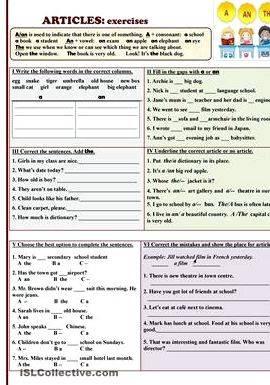


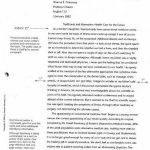 Writing research article introductions esl
Writing research article introductions esl Writing good feature articles on people
Writing good feature articles on people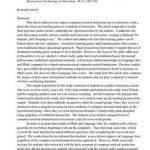 Guidelines for writing an article critique in apa
Guidelines for writing an article critique in apa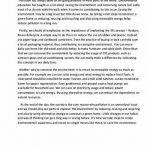 Article writing on save environment photos
Article writing on save environment photos Article writing on save tigers shirt
Article writing on save tigers shirt






